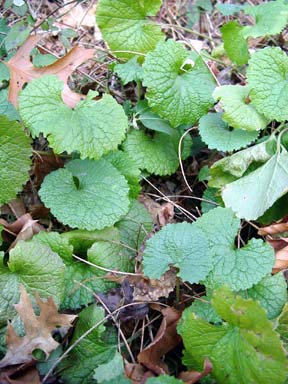 |
The word ďAprilĒ comes from the Latin ď aperireĒ meaning
ďto openĒ. In my zone, first come the trees,
lead by red maples and elms. Also ahead of the pack are
invasives like the garlic mustard (Alliaria petiolata), growing
in a wooded lot near my grocery store.
Invasive critters, like the Asian Longhorn beetle and the Norway
rat, can sneak in the country but invasive plants need to entice
humans into importing them. In the case of garlic
mustard, early European immigrants valued this biennial member of
the mustard family because it tastes, well, like garlic.
Adding to its charm, itís high in vitamins A and C, and
easy to grow in moist part-shade. As an evergreen,
itís readily available in fresh form all winter, which was a
particularly good thing before supermarkets.
But being likable isnít enough. That just gets you into
the garden. To be invasive, you have to spread fast and beat
out the local competition by hogging the light, water, nutrients,
and space. Unfortunately, garlic mustardís chief competitors
include our beloved spring beauty, wild ginger, bloodroot,
Dutchman's breeches, hepatica, and trillium. |